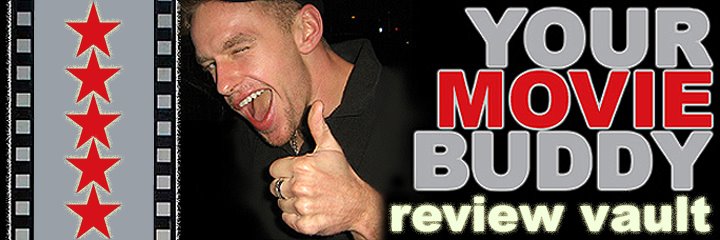2 stars (out of 5)
By R. Kurt Osenlund
The memory and mystique of an American hero is reduced to family-channel folly in “Amelia,” director Mira Nair's gutless, ham-fisted biopic of Amelia Earhart. Calling it conventional would be kind, and comparing it to Martin Scorsese's “The Aviator” – which many journalists have done – is insulting to a true piece of cinematic art. Watching it is like witnessing a tragedy, and I'm in no way referring to the legendary pilot's enigmatic fate. It's one thing for a dumb comedy or a delirious actioner to leave you scrambling for a refund; it's quite another for a potential Oscar contender pregnant with possibility to disappoint so fully. Nair, whose filmmaking prowess has been beautifully displayed in movies like “Monsoon Wedding” and “The Namesake,” guides this featherweight craft through impossibly sunny skies, dodging every dramatic storm cloud in favor of safe, smiley, old-school fluff. Hilary Swank, who many believed would be vying for her third Best Actress prize, has a better shot at landing a Razzie for her work in the title role. Truth be told, “Monsters vs. Aliens” was more gripping than this dud.

“Amelia” does begin with a clean little opening credit sequence, in which the titles appear on the screen and then dissolve into thin air just like the doomed aviatrix. It's a nice touch, but it also marks the extent of this movie's subtlety. Before long, we get the first of many cornball voice-overs, which have our heroine offering affirmations like, “flying lets me move in three dimensions” (as if walking didn't do the same). Are these silly sayings the actual words and thoughts of Amelia Earhart? It occurred to me as I queasily jotted them down verbatim. “Amelia” is based on the biographies, “The Sound of Wings” by Mary S. Lovell and “East to the Dawn” by Susan Butler, but Earhart did author at least two books of her own. As we learn in the movie, such is how she met her eventual husband, George Putnam (Richard Gere), a publishing giant who commissioned Earhart to write about her experience as the first female passenger on a transatlantic flight. She went on to write another book after becoming the first woman to take that same flight on her own, an achievement that also appears in the film. But even if trite lines like, “I want to be a vagabond of the air,” were lifted directly from Earhart's memoirs, the filmmakers and actors lay them on so agonizingly thick that there's no hope for sincerity.
I'm certainly not a Swank fan, but an actress doesn't win two Oscars for nothing, and when handed fertile, more masculine roles (like this one), she tends to deliver. And yet, her performance here suggests that her talents have degenerated. With her short-cropped hair, freckled face and bright blue eyes, she no doubt looks the part, but that credit goes to the makeup department. And, granted, she is working from a laughable mess of a script by Ronald Bass and Anna Hamilton Phelan (who've both penned a handful of screenplays over the last 20 years, but could've easily fooled me into believing they were previously employed by Hallmark). But Swank doesn't bring anything exciting to the table, and she reads all that clichéd nonsense – or “hooey,” to borrow a word from the film – with the flat, unconvincing strain of a novice. What I remember most about the performance are Swank's super-sized incisors, which she flashes so often you'd think someone was tickling her off-camera. Gere is no better, hamming it up big time and employing theatrical ticks and broad gestures reminiscent of an old Hollywood comedy. Together, the actors have very little chemistry, and intimate exchanges between their characters are embarrassingly banal.

Ewan McGregor appears in a supporting role as federal aviation administrator and TWA founder Gene Vidal (father of Gore), with whom Earhart had an affair. When this tidbit began to surface, I thought, “Finally! A little bit of juice!” But, alas, “Amelia” is so utterly devoted to keeping its characters and scenarios shiny and happy that anything even resembling negativity or actual tension is resolved or avoided in a snap. The affair ends as quickly as it begins, Putnam takes Earhart back without hesitation, and the couple even remains chummy with Vidal (which may have been the case, but I'm sure there was a lot more gray area, something this movie knows nothing about). Similarly, when Earhardt comes into a bit of trouble during that first solo flight across the Atlantic, there's the goofy diversion of an emotionally-forced flashback to her childhood in Kansas, followed by the wholly improbable, personal pep talk, “if Lindbergh could do it, you can do it!” And while it acts as an appropriate framing device, Earhart's final, 'round-the-world trek is equally innocuous (you can bet the filmmakers steer clear of addressing what may or may not have happened to the fallen icon).
Something tells me that if Earhart were alive today, this isn't the kind of movie she'd want to be telling her story. It doesn't play like a fascinating portrait of a life, but like an inauthentic, episodic, manufactured imitation of one. Save some poorly handled allusions to an alcoholic father, little is revealed about the woman, as the film hinges her identity on all that gooey “hooey.” Perhaps the only thing graceful about it is its cinematography (which, given the high altitudes and numerous exotic locations, is, of course, rather beautiful). Ultimately, “Amelia” commits the greatest sin a biopic possibly could: it dishonors its subject.







